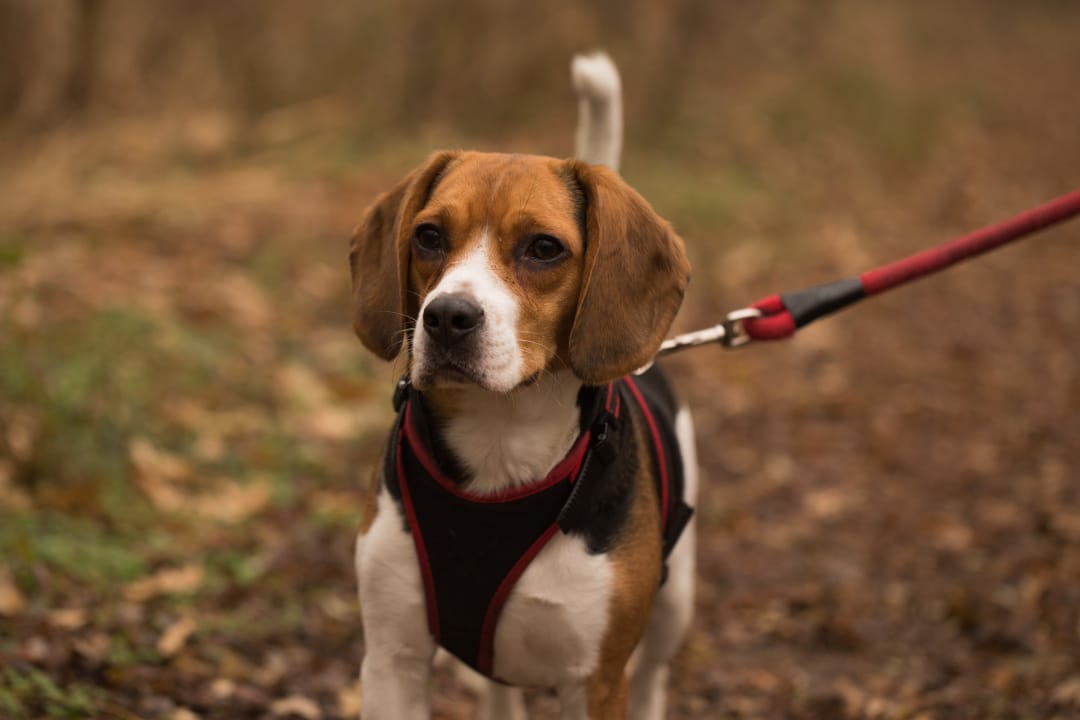
Dogs need daily exercise and outdoor playtime. When you take your pooch on his or her walk, a leash and harness or collar is essential. But not all leashes and harnesses are made equal. Your choice of leash or harness will depend to a large extent on your dog’s breed and personality. For example, if your dog is a puller, you’ll need a sturdy leash and harness. If you take your dog for walks at night, you might want to get a leash or harness that glows in the dark.
Leashes and harnesses are essential items that every dog needs. Yet, the choice in dog leashes and harnesses is mind boggling and buying the best one can be confusing. This guide will help you understand some of the key things to look for in the best dog leashes and harnesses.
One of the decisions you’ll need to make is a dog harness vs. collar. A harness is generally more secure as it fastens securely around your dog’s body. It’s also more comfortable, safer, and less likely to cause injuries. Keep in mind though that you should not leave a harness on your dog all day long. Vets and trainers recommend putting on a harness only for the duration when your dog is outdoors or when you’re training a puppy.
Collars tend to be less secure than harnesses in general. Your dog can easily slip out of a collar and take off, potentially running into traffic or getting lost. Tight-fitting collars can be uncomfortable and may cause injuries, throat damage, back pain, and other problems.
However, collars can give you more control than harnesses, depending on your dog’s size. Also, collars are available in many sizes and designs, are easy to put on and take off, and can be left on all day long. You can also put your dog’s ID tags on a collar.
Here are some of the key things to keep in mind when choosing a leash or harness for your dog:
Like most pet owners, you probably want to keep your dog close. This also gives you more control over your pooch in case you meet other dogs that are unfriendly or people that are not used to being around dogs. However, a longer leash can give your dog more freedom to explore. Some dog breeds are naughtier than others. Choose the length of the leash depending on how well-behaved your dog is and how confident you are of handing him in public. Most standard leashes are 4-8 feet long. A shorter leash is usually recommended during early puppy training and a longer one during more advanced recall training.
There are various types of dog leashes available. You have the standard flat leash with a clasp at the end. Then you have leashes that have a handle for a firm grip.
There are also stretchable or bungee leashes that claim to correct pulling behaviors. However, many trainers say bungee leashes don’t do much at all and in fact make it harder to control your dog.
Slip leashes and martingale leashes function as both a collar and a leash. They work well for dogs who have a smaller head and a thicker neck, so that if the dog backs out of the collar, the leash tightens according to how much the dog is pulling. These types of leashes are also quick to put on and pull off, so they’re great for short potty breaks.
Retractable leashes allow your dog to wander up to 30 feet from you. While the added freedom is great, this type of leash gives you the least amount of control over your dog. In an unfamiliar or uncontrolled environment, it can quickly lead to a dangerous situation. For example, your dog may approach an unfriendly dog or the leash might get tangled.
A hands-free leash attaches to an adjustable waist belt and has control handles along its length. Some leashes also feature slide belt clips to prevent tangles or tripping while allowing your dog to move side to side. These leashes are ideal when you walk your dog in safe and familiar environments.
Nylon is a common material for dog leashes and harnesses because it is inexpensive, durable, and suitable for all kinds of climates.
If you have a large or strong dog, you’ll need a sturdy leash that can withstand the pulling forces from a large dog, such as a steel braided cable leash. Also, if your dog is a chewer, you’ll need a leash that’s more durable.
Small dogs may do better with leather leashes as they are less likely to cause leash burn.
Keep in mind that a harness is a substitute for a collar and not a leash. Many dog harnesses have a padded chest plate for added comfort. Some have adjustable points so that you can customize the fit to your dog. This is important because without a secure fit, your dog can slip out of the harness. You may want to look for a harness that can function as a seatbelt during car rides (when attached to a separate tether).
If you and your pooch like to go for walks after dark, consider getting a harness with a reflective LED light in the center of the chest panel. This can greatly add to visibility and make nighttime walks safer.
There’s a huge variety available in dog leashes and harnesses. Hopefully this guide will help you choose the best ones for your dog.
05 September, 2022